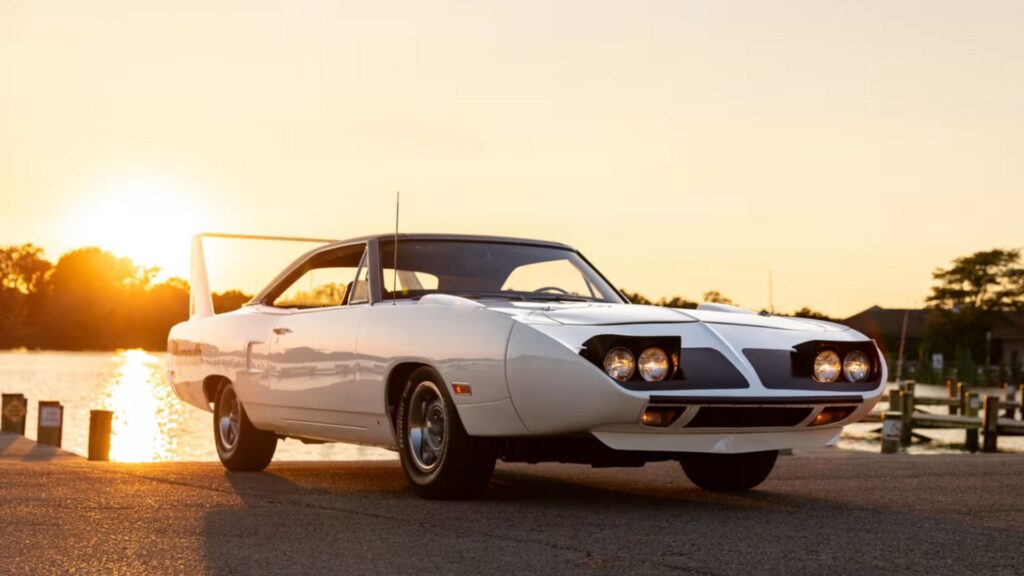When it comes to investing in classic cars, there’s often a delicate balance between financial wisdom and emotional attachment. Many collectors find themselves torn between buying cars that promise a good return on investment and those that hold a special place in their hearts. Let’s dive into how collectors can make smart purchasing decisions, weighing investment potential with passion, and we’ll explore some examples of “smart buys” and cars that often lead to emotional (and sometimes costly) decisions.
1. Understanding the Collector’s Market
The first step in classic car investment is understanding that not all classic cars appreciate equally. While certain models skyrocket in value over time, others plateau or even depreciate. The key factors influencing value include rarity, condition, historical significance, performance specifications, and current market trends. However, one of the biggest drivers is often nostalgia, which can make or break an investment strategy if not handled carefully.

2. The “Smart Buy” Approach
A “smart buy” in the classic car market focuses on cars with solid appreciation potential. Here’s how to identify them:
- Rarity and Demand: Cars that were produced in limited numbers or hold a unique spot in automotive history tend to be highly valued. Think of vehicles like the Shelby GT350 or Porsche 911 Carrera RS, which have a reputation for both scarcity and desirability.
- Condition and Authenticity: Originality is key. Matching serial numbers and original parts significantly add to a car’s value. Any restoration work should be done with the utmost care, maintaining as many original elements as possible.
- Market Timing: Understanding market cycles is critical. Some cars increase in value due to current trends, like the rising interest in 1990s Japanese sports cars, while others lose value as newer generations become less interested in certain eras of cars.
- Future Collectibles: Look for cars that are starting to gain interest but haven’t yet peaked. Models like the early 2000s BMW M3 E46 and Dodge Viper are beginning to show promise as future classics with appreciating value.
3. The Emotional Buy Trap
Emotional buys are cars that tug at a buyer’s heartstrings, often reminding them of their youth or special memories. While there’s absolutely nothing wrong with indulging in an emotional buy, it’s important to understand the risks:
- Nostalgia-Priced Models: Some cars, like the 1970s and ’80s Ford Mustangs or the Pontiac Firebird, may hold sentimental value but don’t always have the appreciation rate of rarer models. While they bring joy, they may not be the best investment.
- Overpaying Due to Popularity Surges: When a car becomes a pop culture icon—like the DeLorean DMC-12 from Back to the Future—prices often surge temporarily. Collectors may pay a premium for these vehicles, but once the hype fades, so can the value.
- Personal Attachment vs. Market Trends: Just because a collector loves a car doesn’t mean it will hold value. For example, while a pristine Chevrolet Chevette might mean the world to someone who grew up with one, it’s unlikely to offer much return on investment.

4. Examples of Smart Buys
Here are some classic models that have proven to be wise investments and still offer good potential:
- Porsche 911 (1970s-1980s models): Porsche 911s have seen substantial appreciation, particularly those from the 1970s and 1980s. Their reputation for quality and performance makes them a smart choice.
- Toyota Supra MKIV: The 1990s Toyota Supra, with its iconic 2JZ engine and cult status, has seen significant appreciation. With the resurgence of interest in Japanese classics, this car remains a strong investment.
- Ferrari Dino 246 GT: This model was once overlooked as it wasn’t branded a “true Ferrari,” but its rarity, design, and historical significance have made it highly sought after and a sound investment.
- Ford GT (2005-2006): The Ford GT’s limited production and performance capabilities have made it a collector’s dream, with values rising steadily since its release.
- Mazda RX-7 FD: Like the Supra, the RX-7 has gained a lot of attention from JDM fans and is starting to see appreciation in value, especially well-maintained models with low miles.
5. Examples of Emotional Buys That Could Miss the Mark
These cars are often purchased with the heart rather than the wallet and may not deliver a strong return on investment:
- Pontiac Firebird (non-Trans Am models): While certain Trans Am models may hold value, many Firebirds are collected more for nostalgia than financial growth. They’re fun, but many variants don’t appreciate significantly.
- Chevrolet Chevelle (Non-SS models): The SS versions command a premium, but many base models, despite being beautiful and iconic, don’t see the same level of appreciation as their higher-performance counterparts.
- DeLorean DMC-12: As iconic as it is, the DeLorean’s value mostly stems from its cultural appeal rather than performance or scarcity, meaning it may not appreciate as reliably as other classics.
- Ford Mustang (1970s and 1980s models): Mustangs from the 1970s and early 1980s can be nostalgic buys, but many collectors pay too much due to sentimental attachment without realizing they aren’t as valued in the broader market as the 1960s models or high-performance variants.
6. Tips for Balancing Passion with Smart Investments
- Set Investment Goals: Be clear about why you’re investing. If it’s purely for financial gain, avoid letting emotions influence the choice. However, if personal enjoyment is part of the equation, set a budget that includes some leeway for emotional buys.
- Consult Experts: Before making a major purchase, consult with classic car appraisers or market analysts to gauge whether the car has true investment potential or if it’s overvalued.
- Diversify Your Collection: Just like in financial portfolios, diversification can help balance risk. Mix high-value “investment” cars with a few passion-driven purchases for a well-rounded collection.
- Focus on Condition and Provenance: Regardless of emotional or smart buys, always prioritize cars in top condition with traceable ownership and maintenance history. These aspects retain value even if the car isn’t a top-tier investment.
- Have a Long-Term Perspective: Most classic cars take years, if not decades, to see a significant appreciation. Patience is essential, especially when balancing emotional and financial decisions.
Final Thoughts
Investing in classic cars can be as much about passion as it is about profit. By learning to identify smart buys and managing emotional impulses, collectors can build a valuable collection that brings both joy and financial security. Remember, the ultimate goal is to enjoy your collection, whether it’s an investment or a nostalgic tribute to the cars that shaped your past.
With the right strategy, you can find that perfect balance between passion and practicality.

[…] for its significance in automotive history, has surfaced with just 19,000 miles on the odometer. This rare example, originally delivered to Toyota of Sarasota in Florida, has spent its life under careful ownership, […]